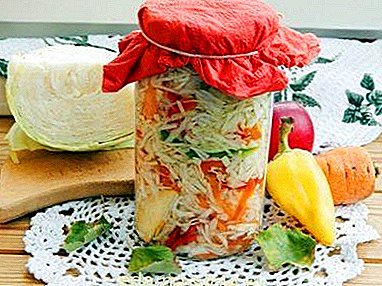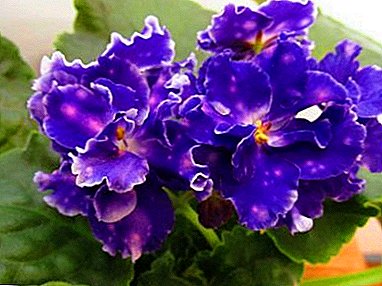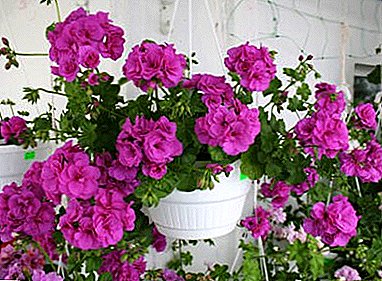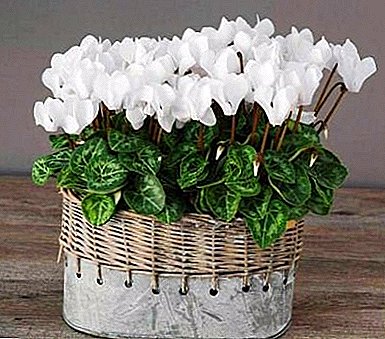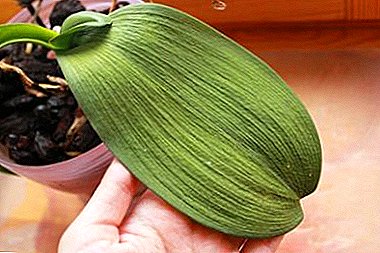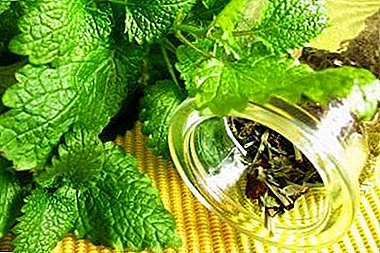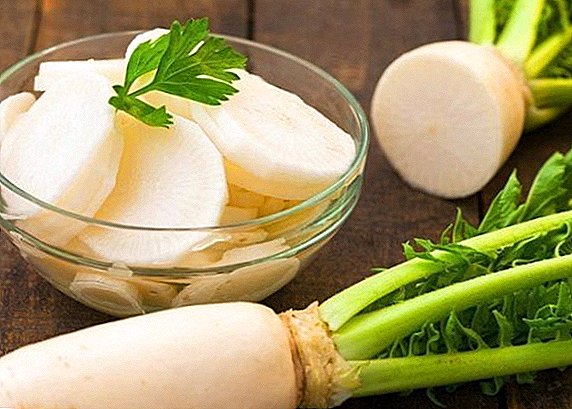 Radish is a year-round product. However, it contains more useful ingredients in the summer season. To save the benefits of the root can be harvested for the winter. And how to preserve the sweet variety of daikon, consider further in the article.
Radish is a year-round product. However, it contains more useful ingredients in the summer season. To save the benefits of the root can be harvested for the winter. And how to preserve the sweet variety of daikon, consider further in the article.
Body benefits
Daikon is a root vegetable, an analogue of radish. You can write books about the benefits of this vegetable:
- Daikon contains the entire list of vitamins B (from B1 to B12). They are necessary for everyone, because they play a huge role in the processes of cellular metabolism. In addition, daikon is rich in vitamins such as C, A, PP, E.
- Next - the minerals. These include phosphorus, selenium, copper, iodine, iron, calcium, potassium, and even manganese. Daikon also contains pectin, fiber, antioxidants, carotene and enzymes.
Learn more about the beneficial properties of white radish daikon.
The main difference from other vegetables is that this radish does not have the ability to absorb any harmful substances, including salts of heavy metals from the soil. Thus, daikon is invaluable for the human body, it has a positive effect on almost the whole body. 
Important! It is necessary to carefully approach to dikon people with gastrointestinal problems (gastritis, ulcer). Poor absorption of fiber, which the product has enough, will lead to indigestion and flatulence, will put an extra load on the intestines.
The benefits of daikon:
- cleansing the body. Instead of buying expensive laxatives or diuretics in pharmacies, it is enough to regularly eat this product. The result is the same, and the benefits are greater, and without side effects. Potassium and calcium (especially potassium salts), which are in its composition, easily and carefully remove slags and excess liquid;
- increase immunity. The above number of vitamins speaks for itself. In addition, the microbes of the internal organs perfectly clean the volatile and protein components of this vegetable;
Eating horseradish with beets, pomegranate juice, bell pepper, almonds, tomatoes, carrots, white currants and oranges will help improve immunity.
- cleans and protects the liver and kidneys. In order to remove small stones, one glass of daikon juice per day is enough;
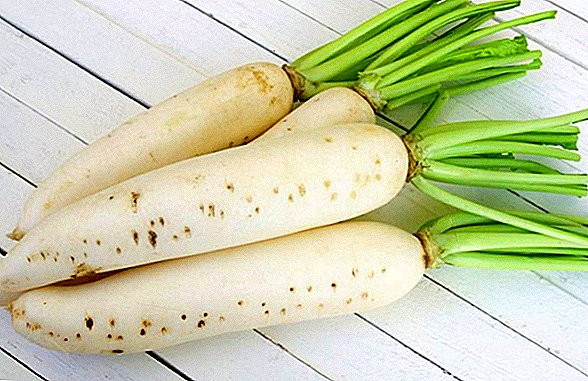
- restores the nervous system and gives calm and good mood. ½ cup of radish juice is enough to cope with increased aggression;
- favors weight loss. Since there are many vitamins in this product, there is simply no room for fats. For every 100 g accounted for only 18 kcal. In addition, radish removes from the body all the excess (toxins, cholesterol);
- cures some skin conditions. If the juice of this radish is not drunk, but rubbed into the skin, you can get rid of acne, boils, age spots and even freckles;
- improves hair condition Rubbing daikon juice in the scalp, you can ensure your hair health and natural shine. Hair will be beautiful and strong.
We advise you to read about how to grow daikon.
As such, the product has no contraindications. However, this does not mean that excessiveness makes sense.
Video: useful properties of daikon
Stocking
All sources agree that daikon is a hybrid. This means that it does not grow in the wild. The homeland of this vegetable is Japan, although nowadays it is grown in many countries of Western Europe, as well as in Brazil and the USA.
Even if you are not a fan of oriental cuisine, this root has many advantages in cooking and gardening:
- the plant is not capricious, it does not require special conditions for growth;
- fruits are quite early - the crop can be harvested 1.5 months after planting;
- large fruits (the weight of one vegetable can reach 3 kg);
- easy to store - no special conditions are required, it does not lose its useful qualities over time.
Did you know? The most unusual variety of daikon - Sakurajima - has roots in the form of a huge turnip: about 50 cm in diameter and up to 45 kg in weight.

The only condition for harvesting is the lack of rainfall, and in summer there are enough dry days. No special tools are needed - it is pulled out of the ground for the tops.
Fresh daikon must be stored in a refrigerator or in a cool room, for which an ordinary cellar will fit perfectly. In such conditions, it can retain freshness for up to 3 months.
Marinated Daikon: A Classic Recipe
Now let's talk about the preservation of daikon for the winter. To begin, consider the classic marinating recipe.
Ingredients
 For 100 g of daikon you need:
For 100 g of daikon you need:
- 30 ml of apple cider vinegar 6% or 50 ml of rice vinegar;
We recommend to read about how to make apple cider vinegar at home.
- 50 ml of water;
- 50 grams of sugar;
- 1/5 teaspoon turmeric;
- 1/5 teaspoon sea salt.
Did you know? While daikon is a very sweet vegetable, there are nuances. So, a boiled root crop gives the final dish a knitting taste, like fresh persimmon. With other types of heat treatment of this effect is not observed. Fresh vegetables are the most juicy and sweet of the varieties, which is why it is so popular in salads.
Kitchenware
You will need: 
- pan;
- knife;
- spoon;
- cutting board;
- colander;
- towel;
- jar or plastic container with a lid.
The cooking process is step by step
The classic marinating recipe is quite simple:
- First, prepare the marinade: water, sugar, vinegar and turmeric should be cooked until the sugar is completely dissolved. After that, remove from heat and let cool.
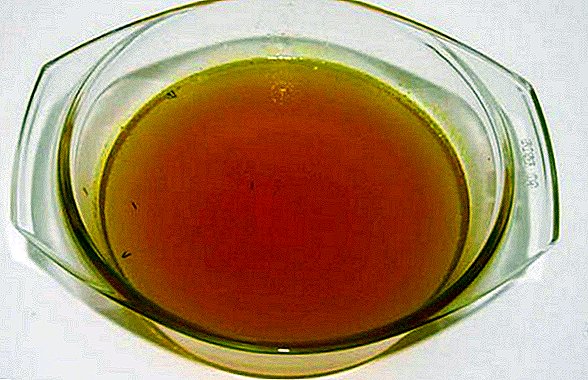
- Daikon fruits are carefully cleaned and cut into circles.
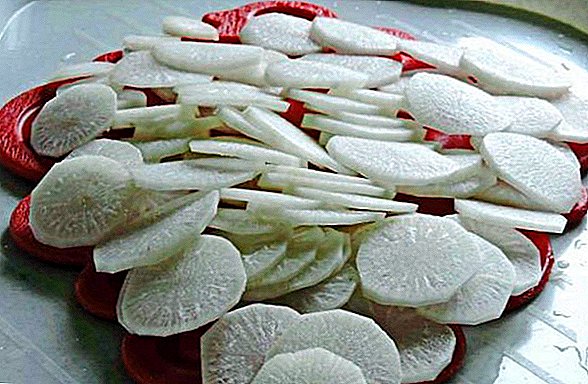
- Salt so that the salt touches all the circles and leave in a colander for 1 hour. So we let the excess fluid flow.
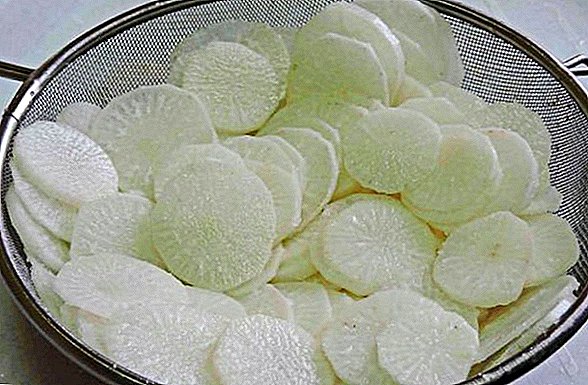
- Now you need to wash off the salt and wipe the mugs with a towel. Then put in a jar or plastic container.
- Fill the previously prepared marinade, close the lid and shake gently.
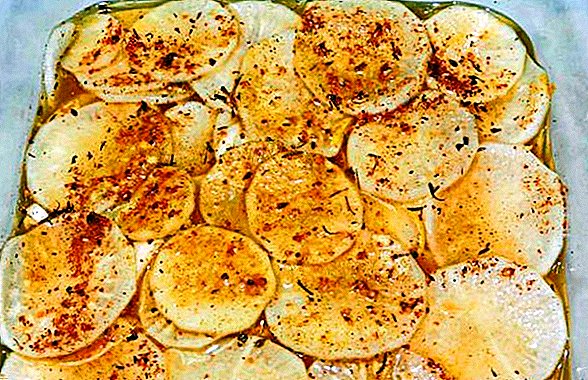
- Put the container in the fridge.
Korean cooking recipe
One of the popular recipes for cooking oriental root vegetables is from Korea itself. In terms of complexity, it is almost the same, but differs in a set of spices.
Ingredients
For 600 g of daikon you need:
- 3 tablespoons of vegetable oil;
- 1 tablespoon of 9% table vinegar;
- 1 medium bulb;
- 5 cloves of garlic;
- 1 teaspoon of coriander (in grains);
- ½ teaspoon of red pepper (ground);
- ½ tsp salt.

Kitchenware
From household appliances will need:
- Korean carrot grater;
- mortar for spices;
- pan;
- garlic press;
- colander;
- jar with a lid.
Important! In folk medicine of the East, daikon is considered the first means for raising immunity. Regular consumption of the root favorably affects the condition of the kidneys, liver, vessels, normalizes digestion, gallbladder function.

Check out the recipes for harvesting asparagus beans, eggplants, squash, sorrel, garlic, zucchini, pepper, parsley, dill, horseradish, parsnip, celery, rhubarb, tomato, colored, white cabbage and red cabbage for the winter.
The cooking process is step by step
When everything is ready, proceed to the preparation:
- Carefully wash the daikon, peel it and rub it on the grater.
- In a mortar, rub the coriander and, together with salt, vinegar and pepper, add to the radish.
- Finely chopped onion fried in butter, then pass through a colander to separate the liquid from the onion.
- Using a press, chop the garlic and add it to the liquid remaining after frying the onion.
- The resulting mixture is added to the daikon.
- Stir.

Japanese cooking recipe
In addition to the usual preservation, daikon can be stored for use in the preparation of sushi. This recipe got its name precisely because of its use in the traditional dish of Japan.
Ingredients
For 100 g of daikon, we need:
- ½ cup rice vinegar;
- 25 grams of sugar;
- 10 g of salt;
- 1 pinch of saffron.
Kitchenware
But the kitchen utensils need the bare minimum:
- knife;
- sterile 0.5 liter can;
- small marinade bowl.

The cooking process is step by step
Cooking radish for rolls is very simple:
- Daikon clean, wash and cut into 10 centimeters, which we put in a jar.

- Sugar and salt are dissolved in vinegar.
- Saffron pour 45 ml of boiling water and let it brew.
- We combine vinegar and saffron water. Stir well.
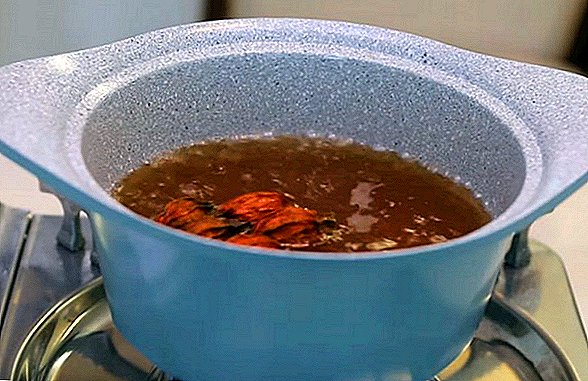
- Marinade is poured into a jar, after which it must be put in a warm place.

- After 1 week, rearrange the billet in the fridge.
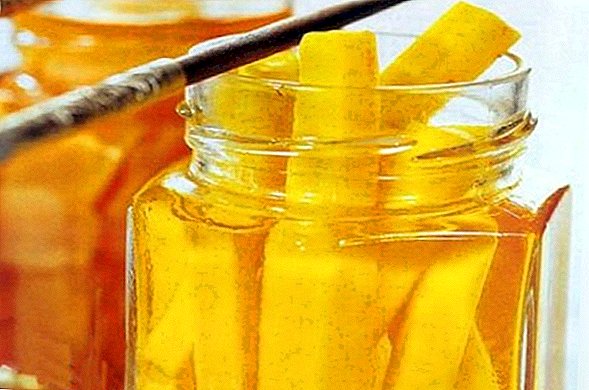
What to bring to the table
It is worth noting that the daikon leaves (aerial part) are used in the preparation of fresh salads, which gives them a special flavor notes. As mentioned earlier, you can also make juice from this vegetable. One of the popular applications of daikon in oriental cuisine is adding to miso soups.
In the grated form, it goes well with fried fish, natto (soybeans prepared in a special way), soba (buckwheat noodles), tempura (dishes of fish, seafood and vegetables cooked in batter and fried in deep fat).
In some prefectures of Japan, daikon is served in stew with squid or octopus. Sweet Japanese radish is a klondike of vitamins and nutrients, as well as a great opportunity to bring a touch of exotic to everyday life.











